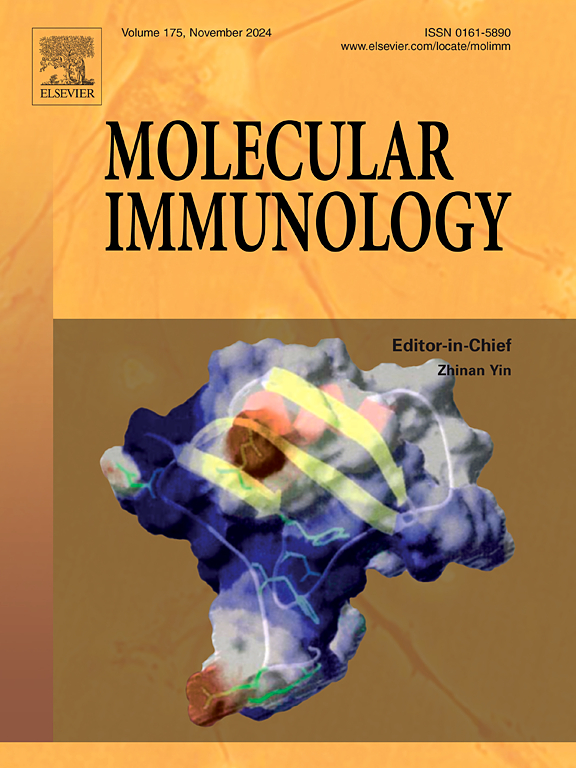Single-cell transcriptomics reveals the immune mechanisms by which tonsillectomy improves clinical outcomes of recurrent Immuoglobulin A nephropathy after kidney transplant
IF 3.2
3区 医学
Q2 BIOCHEMISTRY & MOLECULAR BIOLOGY
引用次数: 0
Abstract
Immunoglobulin A nephropathy recurrence (IgANR) is a major cause of graft function loss in renal transplant patients with IgA nephropathy. Tonsillectomy has been recognized as an effective treatment for IgANR, but the cellular and molecular effects underlying its efficacy remain poorly understood. We aimed to identify the cell types and gene expression profiles in tonsillar tissue and peripheral blood mononuclear cells (PBMCs) to investigate the effectiveness of tonsillectomy in IgANR treatment. Flow cytometry and single-cell mRNA sequencing were performed to comprehensively characterize the cell types of 29 patients with IgANR. Additionally, we analyzed a tonsillar tissue sample and three PBMC samples to gain further insights. Single-cell transcriptome analysis revealed significant changes in gene expression following tonsillectomy in patients with IgANR. Conventional cytometry and transcriptome analysis revealed that B cells played a crucial role in IgANR treatment using tonsillectomy. Notably, the downregulation of IGHA1 expression, memory B cell inactivation, and alterations in related pathways led to a reduction in galactose-deficient IgA1 (Gd-IgA1), which plays a crucial role in IgA nephropathy. The phosphatidylinositol-3-kinase (PI3k)-Akt pathway was significantly downregulated in peripheral B cells, and peripheral B cells in patients with IgANR who underwent tonsillectomy demonstrated downregulated expression of T cell leukemia/lymphoma 1 A (TCL1A), an Akt coactivator. As a result, it is possible that TCL1A plays a major role in the mediation of this therapeutic effect. Tonsillectomy aids in the treatment of IgANR by guiding B cell phenotypes, inducing functional changes, and regulating the immune response, thereby reducing Gd-IgA1 levels and improving clinical outcomes.
单细胞转录组学揭示了扁桃体切除术改善肾移植后复发性免疫球蛋白A肾病临床预后的免疫机制
免疫球蛋白A肾病复发(IgANR)是IgA肾病肾移植患者移植物功能丧失的主要原因。扁桃体切除术已被认为是IgANR的有效治疗方法,但其疗效背后的细胞和分子效应仍然知之甚少。我们旨在鉴定扁桃体组织和外周血单个核细胞(PBMCs)的细胞类型和基因表达谱,以研究扁桃体切除术治疗IgANR的有效性。采用流式细胞术和单细胞mRNA测序对29例IgANR患者的细胞类型进行综合表征。此外,我们分析了扁桃体组织样本和三个PBMC样本以获得进一步的见解。单细胞转录组分析显示IgANR患者扁桃体切除术后基因表达发生显著变化。常规细胞术和转录组分析显示,B细胞在扁桃体切除术治疗IgANR中起着至关重要的作用。值得注意的是,IGHA1表达下调、记忆性B细胞失活以及相关通路的改变导致半乳糖缺乏症IgA1 (Gd-IgA1)的减少,这在IgA肾病中起着至关重要的作用。外周B细胞中磷脂酰肌醇-3激酶(PI3k)-Akt通路显著下调,接受扁桃体切除术的IgANR患者外周B细胞中T细胞白血病/淋巴瘤1 A (TCL1A) (Akt共激活因子)表达下调。因此,TCL1A可能在这种治疗效果的调解中起主要作用。扁桃体切除术通过引导B细胞表型,诱导功能改变,调节免疫反应,从而降低Gd-IgA1水平,改善临床结果,有助于治疗IgANR。
本文章由计算机程序翻译,如有差异,请以英文原文为准。
求助全文
约1分钟内获得全文
求助全文
来源期刊

Molecular immunology
医学-免疫学
CiteScore
6.90
自引率
2.80%
发文量
324
审稿时长
50 days
期刊介绍:
Molecular Immunology publishes original articles, reviews and commentaries on all areas of immunology, with a particular focus on description of cellular, biochemical or genetic mechanisms underlying immunological phenomena. Studies on all model organisms, from invertebrates to humans, are suitable. Examples include, but are not restricted to:
Infection, autoimmunity, transplantation, immunodeficiencies, inflammation and tumor immunology
Mechanisms of induction, regulation and termination of innate and adaptive immunity
Intercellular communication, cooperation and regulation
Intracellular mechanisms of immunity (endocytosis, protein trafficking, pathogen recognition, antigen presentation, etc)
Mechanisms of action of the cells and molecules of the immune system
Structural analysis
Development of the immune system
Comparative immunology and evolution of the immune system
"Omics" studies and bioinformatics
Vaccines, biotechnology and therapeutic manipulation of the immune system (therapeutic antibodies, cytokines, cellular therapies, etc)
Technical developments.
 求助内容:
求助内容: 应助结果提醒方式:
应助结果提醒方式:


